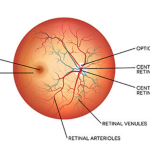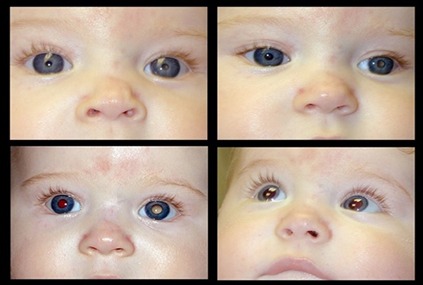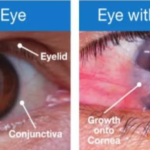Trypan blue is a type of acid-azo dye.It is an organosulfonate salt that is used as a crucial stain in biosciences to selectively colour dead tissues or cells blue. It is also used as a direct dye for cotton textiles and as a fluorochrome.
Trypan blue is derived from toluidine, that is, any of several isomeric bases, C14H16N2, derived from toluene. Trypan blue is so-called because it can kill trypanosomes, the parasites that cause sleeping sickness.
Use of vital dyes in ophthalmic surgery has gained increased importance in the past few years. Trypan blue (TB) has been a popular choice among anterior segment surgeons mainly due to its safety, ease of availability, and remarkable ability to enable an easy surgery in difficult situations mostly related to visibility of the targeted tissue.
It is a dye used as a visualizing aid to stain the epiretinal membranes during ophthalmic surgical vitrectomy procedures, thereby facilitating removal of the tissue and also used in ophthalmic cataract surgery to stain the anterior capsule in the presence of a mature cataract. This is done to aid in visualization before creating the continuous curvilinear capsulorhexis.
Concentration
- Anterior capsular staining -0.06%
- Posterior segment surgeries -0.15%
- Enucleation surgery for Tenon’s capsule -0.06%
Mechanism of action
Trypan blue ophthalmic drops selectively stains membranes in the human eye during posterior surgery, such as epiretinal membranes (ERM) and Internal Limiting Membranes (ILM).
Properties
- In terms of use in cataract surgeries, the dye does not penetrate the capsule, permitting visualization of the anterior capsule in contrast to the non-stained lens cortex and inner lens material.
- Selectively stains the Tenon’s capsule, and hence is used after enucleation surgeries during layered closure, without entrapment of conjunctiva in the Tenon’s capsule.
- In the posterior segment of the eye, it stains ERM [epiretinal membrane] blue on instillation after fluid/air exchange.
- Trypan blue is a bluish-grey to dark blue powder while its aqueous solution is deep blue with a violet tinge.
Uses
- To stain the anterior capsule of lens during cataract surgeries. This is especially useful in eyes with a decreased red reflex, or weak zonules, as the dye can immediately allow the Surgeon to detect a radial shift of the capsular bag.
-
- To stain and strip the Descemet’s membrane in Descemet’s stripping endothelial keratoplasty (DSEK)
- Aid in stripping the corneal endothelium from the donor button in Deep anterior lamellar Keratoplasty (DALK).
- To stain the Tenon’s capsule after enucleation surgeries.
- For posterior segment surgeries, to stain the ERM.
- TB has also been used in glaucoma filtration surgery.
- TB has had some limited usefulness in conjunctival surgery.
- Cell counting-It stains dead cells by permeating their compromised membranes and binding to intracellular proteins which results in a dark blue appearance.
- Rapid detection of Cerebrospinal fluid sterility – We expected that using TB staining in conjunction with haemocytometer counting would allow us to quickly estimate the quantitative culture count and detect CSF sterility.
Advantages
- FDA approved.
- Comes in a ready to use, pre-mixed solution in a disposable, one use glass syringe.
- Capsule takes up the stain immediately after it comes into contact with the dye.
- Is not toxic to corneal endothelium.
- Has been proven to be safe in pediatric cataract surgeries.
Disadvantages
- The dye to be washed out quickly, or can stain other ocular tissues (anterior hyaloid, posterior capsule). This stain usually disappears one week to 10 days.
- Cautious use in pregnant and lactating women is required, since large IV doses have been found to be teratogenic in animal models.
- Use of the dye along with hydrophilic acrylic IOL is not recommended by FDA, since there is a chance of permanent staining of the IOL.
Conclusions
TB is the most commonly used dye in cataract surgery. The prevalence of its use is increasing due to the introduction of wet lab training in almost all the teaching hospitals around the world. Besides, its safety profile allows for expanding indications for its use in corneal, conjunctival, and glaucoma surgeries.






